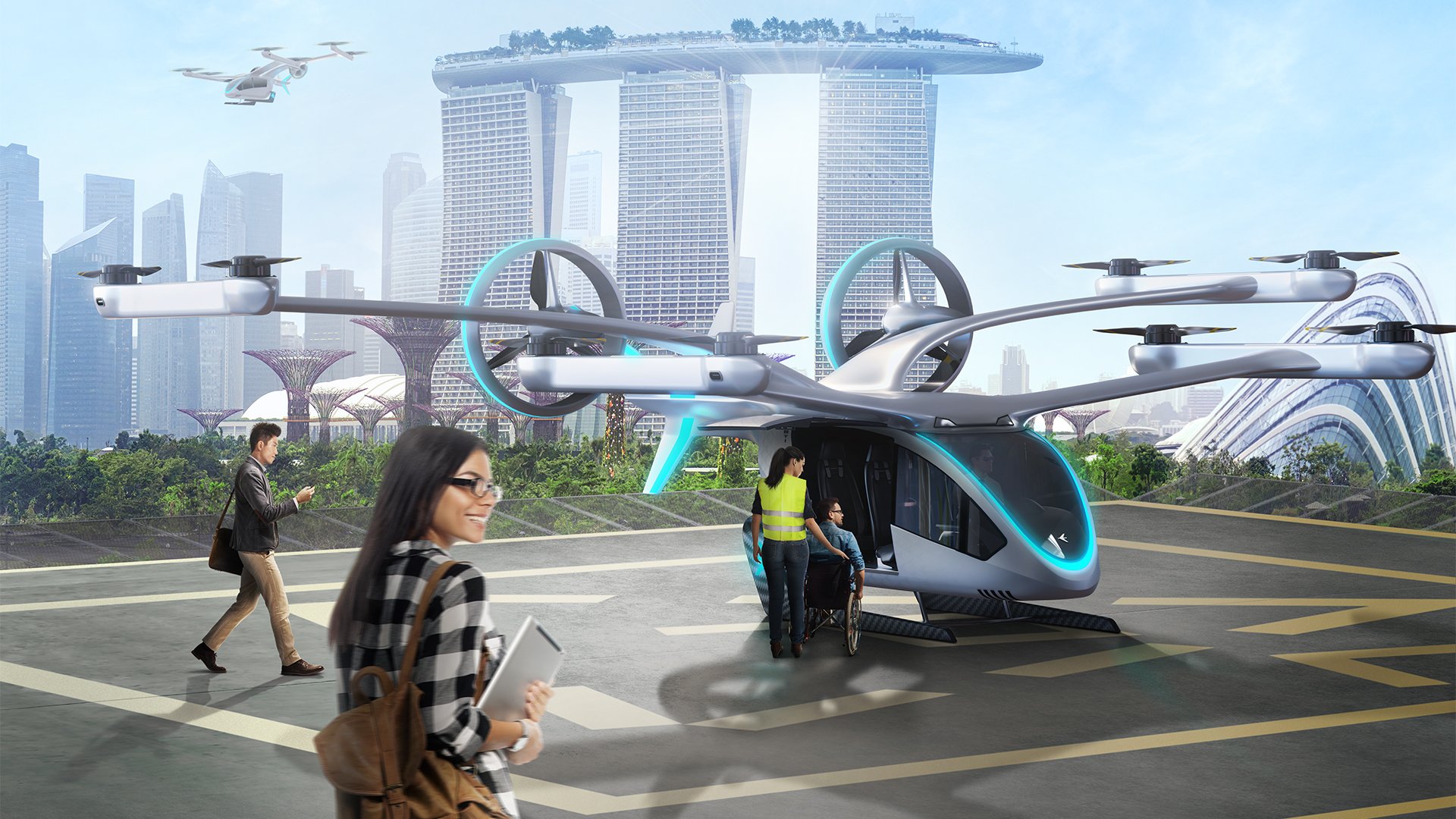Click Here to View This Page on Production Frontend
Click Here to Export Node Content
Click Here to View Printer-Friendly Version (Raw Backend)
Note: front-end display has links to styled print versions.
Content Node ID: 418742
Embraer is stepping up its plans to develop eVTOL aircraft with the formation this week of a subsidiary called Eve Urban Air Mobility Solutions. The Brazilian aircraft manufacturer said the new division is working on “a portfolio of solutions to enable the urban air mobility (UAM) market,” confirming that these include an eVTOL aircraft it has been developing in stealth mode for the past four years through its EmbraerX advanced technology unit.
In addition to advancing plans to certify the four-seat, piloted aircraft, which also now carries the name Eve, the new subsidiary will work on other infrastructure and systems needed to support UAM, including air traffic management software, which is being developed by its Atech subsidiary. The new company will be led by CEO Andre Stein, who was formerly head of strategy for EmbraerX, and has been with the company most of his career, including spells working in Singapore and Australia. It will have bases in both the U.S. and Brazil.
"This company can act with the speed of a start-up but also leverage the massive know-how of Embraer's great experience in aviation," Stein told FutureFlight. Embraer was founded in 1969 and has produced a long succession of utility and business aircraft, as well as airliners.
Back in April 2017, Uber Elevate named Embraer as one of several partners developing eVTOL aircraft for its planned Uber Air air taxi network. Embraer steadfastly declined to share details of the program until July 2020, when it acknowledged that its engineering team had started to develop the aircraft’s flight control parameters and control laws using a simulator. In the same month, FutureFlight found a U.S. trademark application filed for a product called Eve by EmbraerX.
An artist's impression released earlier shows an aircraft with eight propellers attached to what appears to be four beams connected to a pair of narrow, parallel wings protruding from the top of the fuselage, presumably to support vertical lift. At the rear of the aircraft are a pair of ducted fans for cruise flight.
According to Stein, the all-electric Eve aircraft will have a range of up to around 100 km (60 miles) and will be up to 80 percent quieter than current helicopters and with 50 percent lower operating costs. He told FutureFlight that the company has purposely not set a firm timeline for type certification because it wants to carefully validate all the parameters of its design to ensure both peak performance and safety.
"We carry the Embraer DNA, which is built on 'safety first' and so this aircraft will be ready when it's safe," Stein explained. "It will be ready when all the right building blocks are in place, including simulators, and we will build several proof-of-concept versions and prototypes over the coming years to avoid having to make last-minute changes."
Beyond the stated objective of being part of the planned Uber Air rideshare network, Embraer envisages multiple other roles for Eve, which might include cargo operations, emergency relief and search and rescue work. Stein said that the new eVTOL is not simply intended as a helicopter replacement. Eve will enter service with a piloted, but the company indicated that it envisages an autonomous version in the longer term.
Stein said that the new Embraer subsidiary is actively considering further partnerships to advance the program. He indicated that the Eve team will select suppliers for key systems such as propulsion and avionics in much the same way that its parent company does for aircraft programs.
Beyond the development of the aircraft, Eve Urban Air Mobility Solutions will seek to advance other aspects of the so-called urban air mobility ecosystem. These include air traffic management, which is being advanced by another Embraer subsidiary called Atech, as well as all aspects of service and support for eVTOL aircraft.
"We will be looking at the full stack of services and operating [the aircraft] might be something we do," said Stein. "This concept [urban air mobility] has very different infrastructure requirements that will involve what you could call an internet of mobility to deliver a really seamless service."
The unexpected collapse in April of Embraer’s plans to merge its commercial aircraft business with Boeing raised questions about whether the company’s financial challenges might force it to abandon plans for the UAM sector. In June, Antonio Campello stepped down as president and CEO of EmbraerX as part of a cost-cutting exercise implemented by group CEO Gomes Neto.
“We value the vast potential of the UAM market, as it represents a new business segment in which we foresee significant opportunities for Embraer,” commented Neto in a statement released on October 15. “Innovation and diversification are key pillars of Embraer’s new strategic plan, which will increase revenue and improve profitability over the next few years.” He described Eve as “the first company to graduate from EmbraerX.”
The name Eve was chosen for the aircraft, and the new subsidiary, through a crowd-sourcing competition. The program has been under development in stealth mode for several years under the working title DreamMaker.
Back in January 2020, EmbraerX announced a separate partnership with U.S. company Elroy Air to develop a cargo-carrying eVTOL aircraft called the Chaparral that would have a 300-pound payload and operate up to 300 miles. At the time, Elroy said the hybrid-electric, autonomous aircraft would complete FAA type certification under Special Class 21.17 (b) rules by the end of 2022.
